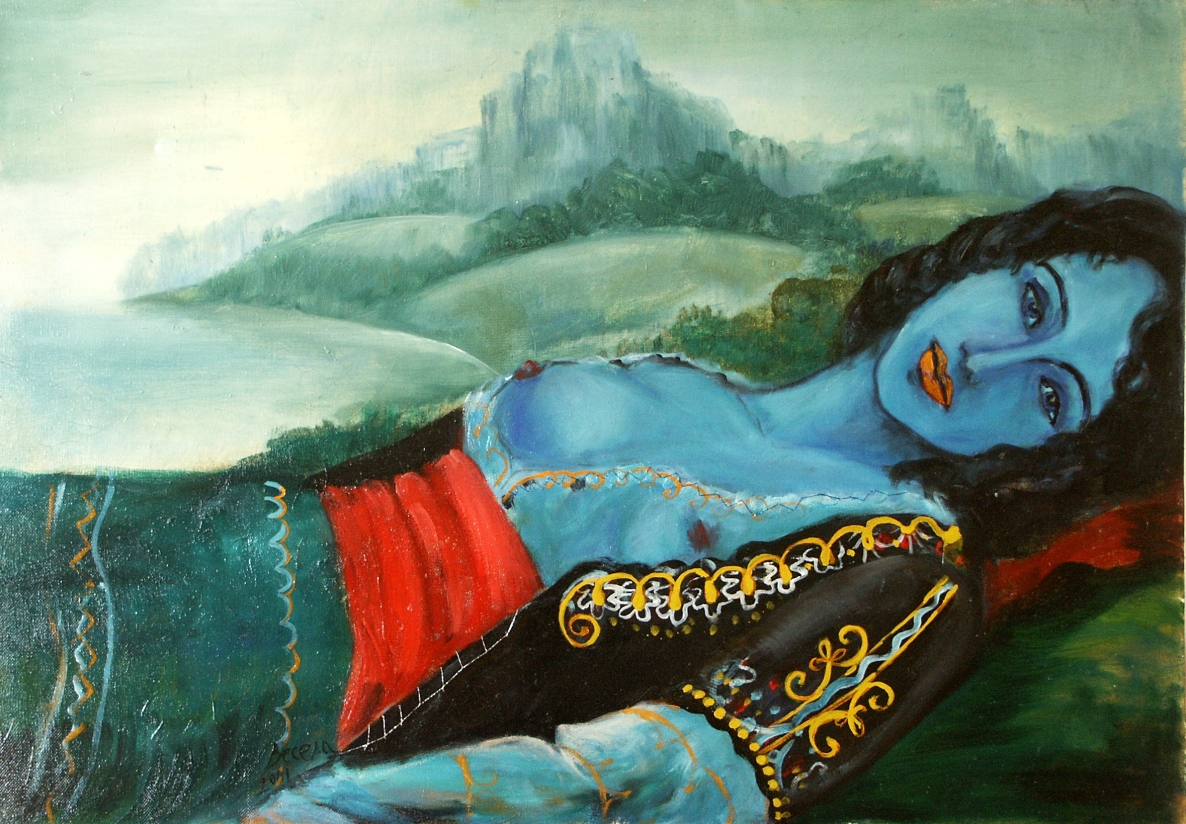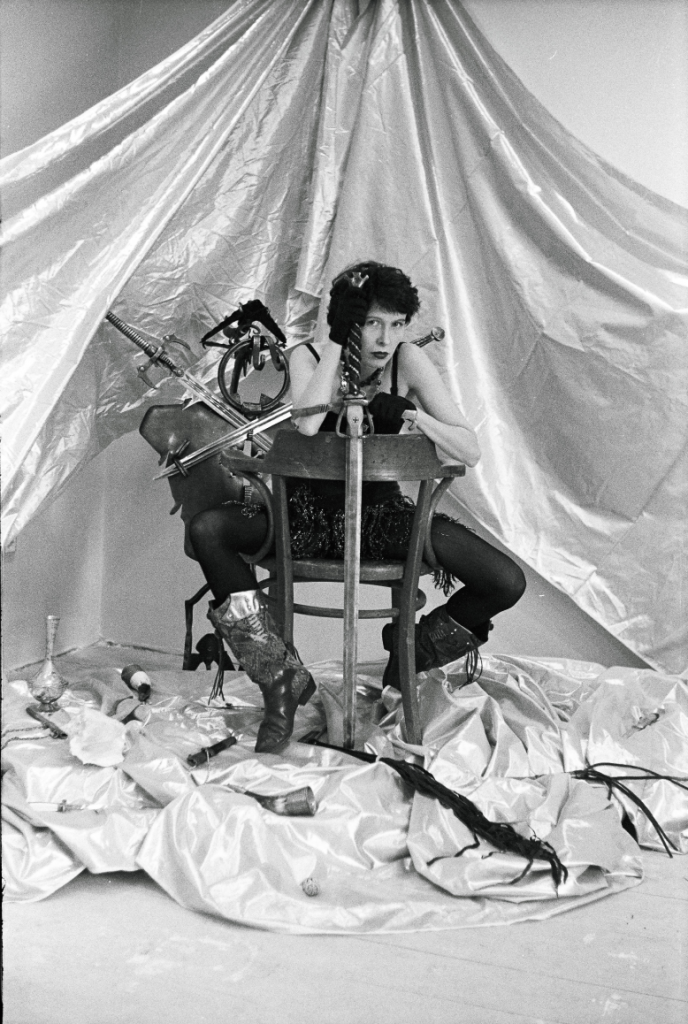
Vesela: When I was a Bird, I flew so high
Exhibition in Millerntorwache, 26.09.2023 – 10.11.2023
Opening on 26.09 at 6 pm
Curated by Alona Karavai
Organized by the Alfred Toepfer Foundation F.V.S. and Asortymentna kimnata
Millerntorplatz 20, 20395 Hamburg
“When I was a stone, I was lying at the top of a mountain. I thought I was the ruler of this world, which was now under my feet.
When I was a bird, I flew so high. I was unreachable.
When I was a fish, I swam in the ocean, and the whole ocean was mine.
Now, I am a human being, and I have nothing. I am nothing in this world, alone and useless. Not as strong as a stone. Not as free as a bird. Not able to live as easily as if I were fish in water. I am here only because I was born in this world as a human being.”
Vesela Naidenova, 1994
The story of Vesela Naidenova is the compositestory of a female artist in the periphery (the periphery of Ukraine or the global periphery) who began her artistic practice in the 90s — a story of interruptions, insinuations and submissions.
The core of Vesela’s artistic interest was from the beginning lying on intersection between landscape, body and self-determination. This can be seen in the choice of colors and poses of figures (primarly women). They are all wholly present, — in the center of the composition, here and now, fully and intensively. Vesela paints authentically and recognizably, thereby also in the local tradition of the artistic scene of Ivano-Frankivsk, which could be characterized by garish colors and intentionally naive style used by professional artists.
At the beginning of her artistic practice, the war in Yugoslavia happened. Half-Bulgarian Vesela, who was born and socialized in Ukraine, was one of the few Ukrainian artists who did not perceive this war as something foreign and repeatedly addressed it in her works (“Balkan Heat”). Later, Vesela said she felt alone with this subject, which was painful. She did not verbalize this pain however. It was not in her character.
At the beginning of her artistic practice, Vesela met local artist Yaroslav Yanovskyi. This developed into a 10-year private and artistic tandem. Vesela and Yaroslav cross-pollinated ideas, critically reflected (now together) the aspect of physicality and human body in the society and often provoked the local conservative community. Later, Vesela said she felt like they two were too much for the small local scene. When it came to exhibitions or conferences, there were occasionally external voices saying that Vesela should not necessarily be involved since Yaroslav was participating anyway. It annoyed Vesela, and she did not suppress this annoyance. It was not in her character.
Together with the war and the man, the topic of power arises in the works of Vesela: who overpowers, who is suppressed? Together with the war and the man, the image of weapon arises in the works of Vesela. A woman with a gun is not always the one who wins, but the one who takes control of her life and stays alive (“Balkan Heat”). Anger and sexuality intertwine in a bizarre interconnection that today might look disturbing. Though, it was one of the few tactics back then to overcome powerlessness. This was the time when the terminology of feminist art had not yet arrived locally (Vesela’s work is described in texts of the time as an “emancipated version of female painting”) and when women artists had not yet come together in supportive communities. Often there was only one conceptual contemporary female in the periphery per generation — and this artist would often be alone and look “conspicuous” among men.
Since the 2010s Vesela has interrupted the contact with the local artistic scene and devoted herself to her daughter’s and an occupation she calls “a craft”. Now Vesela paints on objects (e.g. cutting boards for kitchen) and earns her living by painting Christmas baubles for clients from the EU. From time to time, she comes back to her texts of fairy tales, which recently were published in Chernivtsi.
The exhibition in Hamburg “Vesela: When I was a bird, I flew so high” is her first exhibition since 2013.

Vesela Naidenova is an artist, writer, storyteller, critic, and teacher. She studied at the Prykarpattia Institute of Arts (about which she later wrote the text of Stanislavov’s Brothel). For almost 10 years, she was in artistic and personal tandem with Yaroslav Yanovski, with whom they created a number of performances (“Sacrifice”) and photographic series (“Seven Selves”, “Constitution Day”). In 2008, they published the novel Belvedere Valley, co-authored with Yaroslav Yanovskyi, which won the Best Romance Novel nomination at the Coronation of the Word contest that year.
Vesela dreamed of being a biologist, and the landscape is one of the key elements of her practice (“Tattoo of the Landscape”). Art critic Viktor Melnyk compared her work to Frida Kahlo’s practice, pointing to her attachment to geography and landscape.